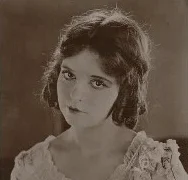Throughout the entertainment industry, there’s always going to be a girl of a generation, and whether that is Alix Earle, Bridget Bardot, or even Marilyn Monroe, there is often a female individual who sets the tone for that year.
Well, Clara Bow is seen as the original “It girl” of not only pop culture but history seeing as she made her stardom debut with silent films.
As pop culture evolves, we use the term “It girl” very often and this ultimately stemmed from Clara’s Bow beginning when she made her big debut with the 1920 film “It” and recognized her as the world’s first official “It girl”.
She was then seen as sensual and often an arousing symbol which made her personify the term “roaring twenties” with her artistry and high spirits.
Yet her life wasn’t all sunshine and rainbows since Bow spent most of her childhood taking care of her mother after she had fallen through a window and was diagnosed with psychosis.
BowBow’sther, Sarah Bow, had such disordered thoughts and psychotic episodes that once she realized her daughter was destined to be a Hollywood star, one night Bow woke with a butcher knife to her neck and it ended with her mother being admitted to a charity hospital despite having no recollection of the episode.
Thus said, as one door closed for Bow, another one opened, and this resulted in her being a major influence on not only filmmaking fashion of American women’s society as a whole.
Often being delved into a seductress and 1920s flapper style, her vivacious personality charmed the film industry and her peers around her.
But it seemed that her mother’s problems blended into hers, struggling with mental issues. Bow had this saying about herself and her adaptation of herself and her film personality, “All the time the flapper is laughing and dancing, there’s a feeling of tragedy underneath. She’s unhappy and disillusioned and what’s what people sensed”.
As much as the audience loved Bow and her entire persona, Hollywood wasn’t as accepted since she wasn’t brought up due to nepotism. Not only that, but her reputation made her deemed as a “wild child” because of her lack of filter, and not wanting to dull down who she was for public viewing.
Over two decades, Bow had accumulated enough money with 57 films starred in and retired away from the public eye.
It was a change, she had gone from rags to riches, in just over a year but had taken the first chance she got to run away from what got her there.
That once undomesticated temperament became reclusive and left her to struggle with schizophrenia alone in her Bungalow in the depths of Los Angeles.
I don’t ever think the fame got to Bow, if anything the world she once had known began to change with the development of sound films, “talkies” as they had described it, and that plus the insurmountable press that was constantly on her every move faced Bow with only oncogenic: To leave Hollywood.
Despite the everlasting tragedy in her life, Bow was the symbol of what a modern woman was, and behind the makeup, her messy bob, and fashion, it was her attitude that cultivated the fans that she did. Despite having one of the biggest breakthroughs in Hollywood, her career is often overlooked due to how Hollywood itself wasn’t prepared for a non-conformist like Bow who’s naturally gifted with wit.
On paper and in film, her life was read as a Cinderella story but without the happily ever after.

